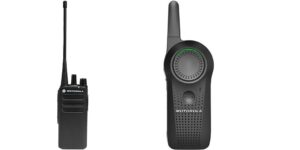Flood zones, earthquake-prone regions, high water tables, or steep slopes—each presents unique challenges for construction projects. Yet, in the face of these complexities, one foundation solution continues to prove its adaptability: helical foundations. In particular, BC helical piles have emerged as a trusted choice for builders working across a wide range of unpredictable environments.
Whether it’s residential construction on unstable ground, industrial builds in seismic zones, or infrastructure projects near wetlands and shorelines, helical foundations offer an approach that’s both stable and flexible—two traits rarely found together in structural engineering.
Why Adaptability Matters in Construction
Building in tough environments isn’t just about navigating nature—it’s about long-term performance. A home or commercial structure built on shifting soil or in a flood-prone area faces continuous threats. Without a dependable foundation system, the risk of structural damage, uneven settling, or even collapse can significantly increase over time.
That’s why choosing a foundation system that adapts to the site—not the other way around—is key. Helical systems are particularly effective at providing customized, site-specific solutions that can handle everything from lateral movement to soil saturation.
This versatility is exactly why construction professionals are increasingly turning to BC helical piles to support their builds across a variety of challenging terrains.
Flood Zones and Waterlogged Soils
When building in low-lying areas or properties near lakes, rivers, or coastal shorelines, water becomes the biggest variable. Saturated soils reduce the effectiveness of traditional foundations, which often rely on compression and friction in dry, compacted ground.
In contrast, helical foundations excel in wet conditions. The piles are installed deep enough to reach stable soil layers, bypassing problematic topsoil and anchoring the structure securely. Their design also minimizes soil displacement, reducing the risk of future shifting due to erosion or water saturation.
This has made BC helical piles a go-to solution for projects involving docks, boardwalks, boathouses, and other waterfront structures where high water tables or seasonal flooding are a concern.
Seismic Zones and Earthquake Resilience
British Columbia lies within one of the most seismically active regions in the country. Building safely in these areas means addressing the potential for soil liquefaction, lateral earth movement, and shifting ground loads.
Helical foundations perform well under seismic conditions due to their ability to distribute loads evenly and flex with minor ground shifts. Unlike rigid concrete footings, which can crack or buckle under stress, properly engineered helical systems provide a level of shock absorption and movement tolerance.
For builders working in seismic zones, investing in BC helical piles provides peace of mind, knowing the structure is equipped to handle the region’s natural risks.
Steep Grades and Unstable Terrain
In mountainous or hilly terrain, standard foundations often require extensive excavation, grading, and retaining walls to establish level surfaces. This not only drives up costs but can significantly impact the surrounding environment.
Helical systems allow for more sustainable builds by reducing the need for mass excavation. Because the piles are individually placed and can be customized for depth and angle, they adapt to the natural contours of the land. This is particularly valuable for remote builds, cabins, or any structure situated on slopes or uneven terrain.
As the construction landscape continues to evolve—with climate concerns, land scarcity, and shifting regulations—foundation solutions need to rise to the occasion. Helical systems have shown that they’re not just an alternative but a preferred method for building in difficult conditions.


